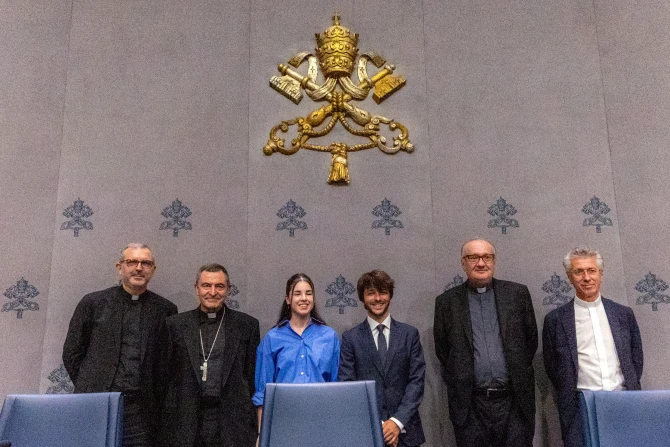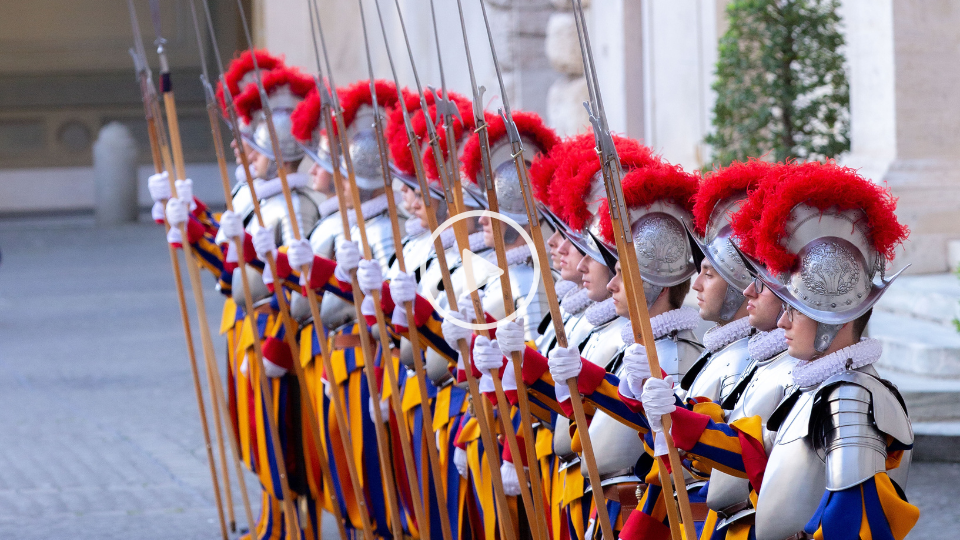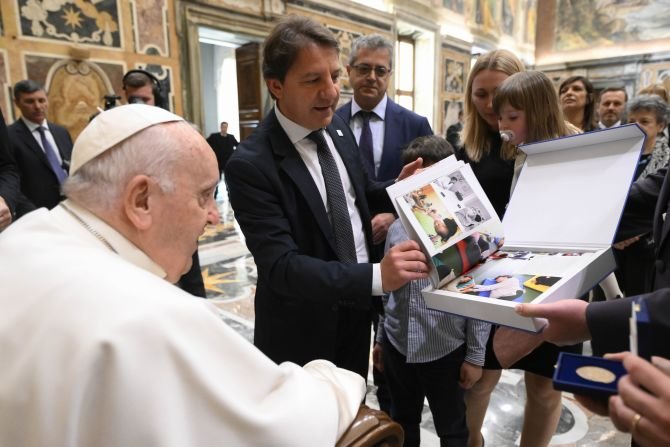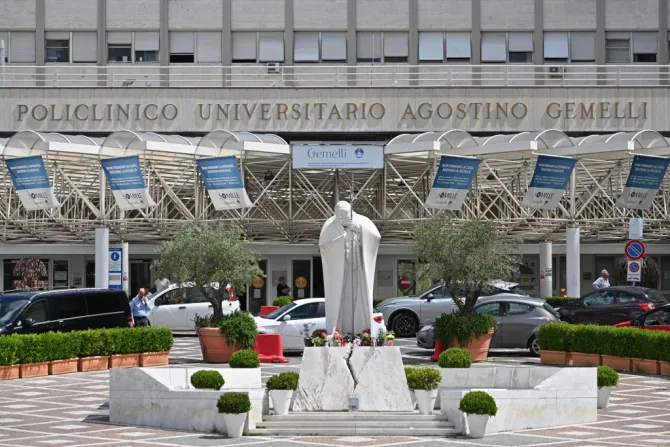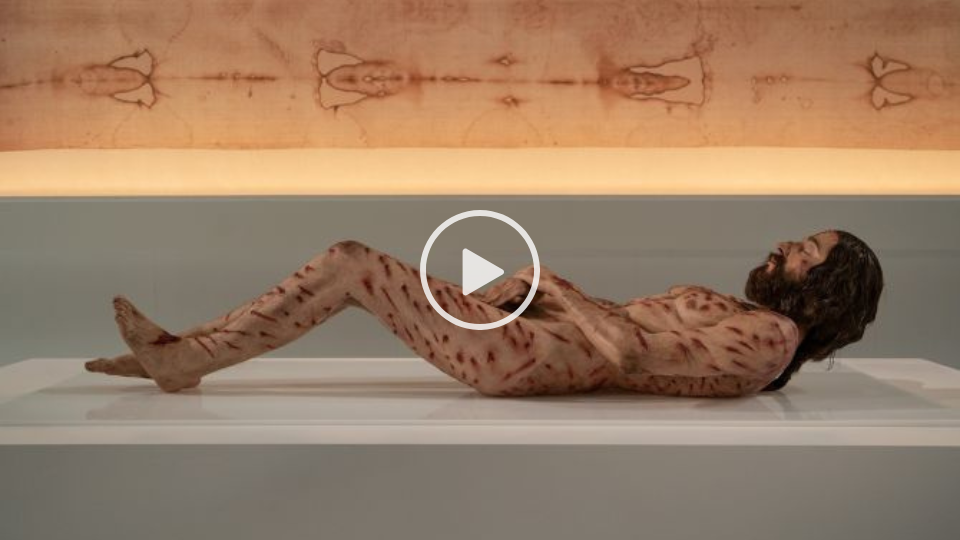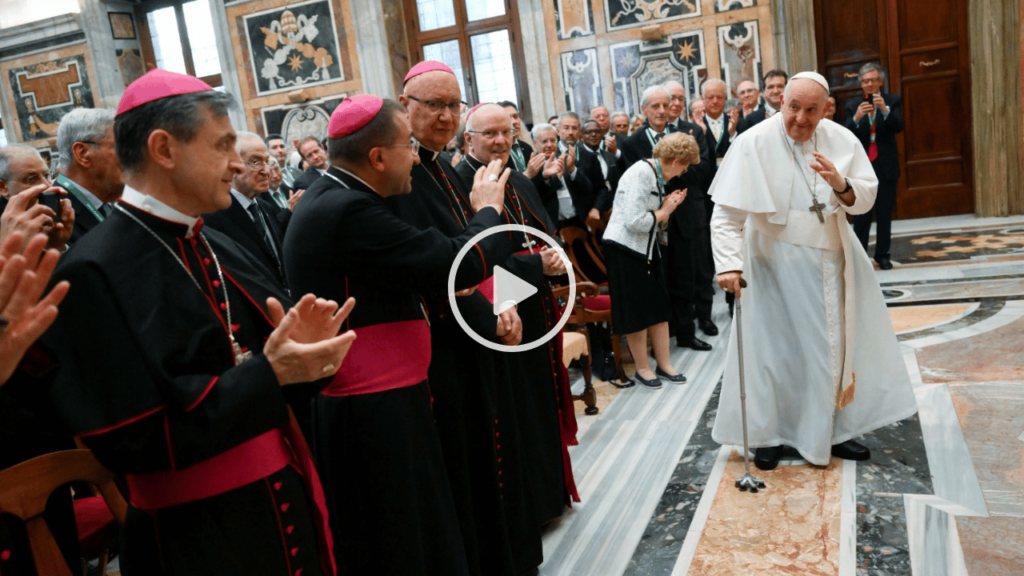A project conceived as a true “spiritual revolution” was presented at the Vatican on July 2, promoted by young Christians from all over Europe who, in their search for meaning, aspire to place Christ at the center of their lives and, with hope, restore the soul of the Old Continent.
SIGN UP FOR OUR NEWSLETTER HERE
The initiative began to take shape two years ago when, acting on an inspiration, Bishop Mikel Garciandía — bishop of Palencia, Spain, and former rector of St. Michael Shrine in Navarre — saw the possibility of coordinating the participation of young people in a project through the Network of St. Michael Shrines in Europe.
However, what initially appeared would end with the Jubilee of Hope in 2025 has taken on an international dimension and a broader horizon, with its sights now set on the Jubilee of Redemption in 2033, to be celebrated in Jerusalem. “Things are happening that seemed impossible a month ago,” Garciandía commented during the July 2 presentation.
With the support of the Bishops’ Subcommission for Youth and Children of the Spanish Bishops’ Conference as well as the Archdiocese of Santiago de Compostela, the Church in Jerusalem, and, more recently, the Vatican, a new proposal has taken shape, inviting young Christians across the continent to open up a pathway to faith and hope for a new European generation.
As a result, “Rome ‘25, the Way of James ‘27, Jerusalem ‘33” is underway. It’s a project created by young people for young people, including those who do not believe but who nonetheless seek meaning in their lives. Specifically, the initiative invites Christians to encounter the Lord through pilgrimage, healing, and evangelization.
In June, the project’s promoters presented the initiative to Pope Leo XIV. “We are convinced that he supports the project,” Garciandía stated Wednesday, adding that this conviction is what led them to officially present it today at the Vatican.
Foundational to the project has been the development of a manifesto, discerned and written by thousands of young Europeans: a “living voice” of a generation “that doesn’t give up, that believes, that dreams, and above all, that loves,” as stated in the document’s presentation.
“This text didn’t originate in an office or from an institutional strategy. It is born from the wound of a generation that has suffered, that is looking for meaning, and that, even so, believes. We believe that Christ is alive, that the Church remains a home, and that Europe can rediscover its soul if it dares to listen to it,” explained Fernando Moscardó, a spokesman and one of the project’s coordinators.
‘The revolution has begun’
Speaking before the media gathered at the Holy See Press Office, the young Spaniard emphasized that “we’re not coming to engage in politics” but to “proclaim the Gospel, to joyfully raise a banner that is not ideological but profoundly spiritual and ecclesial.”
“This manifesto is an act of faith and a call to hope. It’s the voice of young people who do not want to stay on the sidelines, who do not have to say forcefully, ‘We want more’; we want Christ at the center… The revolution has begun, the Spirit is blowing,” he said.
The document will be published on the project’s official website, and all those “who feel part of it” are encouraged to sign it. In addition, all information, updates, and progress on the initiative will be shared through social media under the name J2R2033 (Journey to Redemption 2033).
Also participating in the press conference was Father Antonio Ammirati, secretary-general of the Council of European Bishops’ Conferences, who reiterated his support for the initiative to accompany young people in their “search for meaning.”
The presentation included a video address by Cardinal Pierbattista Pizzaballa, Latin patriarch of Jerusalem, where the project will conclude. The cardinal said that the young people of the Church in the Holy Land “also want to be part of this beautiful project.”
After lamenting that due to the political situation and the war ravaging the region, many young people are unable to make the pilgrimage to Rome, he assured them of his prayers that “in 2033 the world will be different and there will be peace.”
The religious dimension of pilgrimage
Monsignor Graziano Borgonovo, undersecretary of the Dicastery for Evangelization, explained the meaning of the word “pilgrim” and emphasized that following Christ does not mean standing still but rather “setting out on a journey” to “proclaim the Gospel of Jesus, present and alive.”
Archbishop Paolo Giulietti of Lucca, Italy, representing the Italian Bishops’ Conference, emphasized the need to restore to pilgrimage sites and routes their “religious dimension,” sometimes obscured by consumerism and tourism.
“These places were established for spiritual quests and the celebration of faith,” the Italian prelate said.
Also participating in the extensive briefing — via remote connection — was the archbishop of Santiago de Compostela in Spain, Francisco José Prieto Fernández, who recalled the invitation St. John Paul II extended to Europe to return to its roots: “Europe, be yourself,” the sainted pope exhorted in 1982.
The prelate highlighted the path toward the “horizon of transcendence” that this initiative presents, a “beautiful metaphor for following Christ” throughout life.
Finally, Monsignor Marco Gnavi, parish priest at the Basilica of Santa Maria in Trastevere and host of the upcoming Aug. 1 event, where the manifesto will be presented in the context of the July 28 to Aug. 3 Jubilee of Youth, said he was “surprised by the enthusiasm of young people,” especially in a time of “painful changes.”
“In a desperate world, full of conflict, it is important to be oriented toward the horizon,” remarked the prelate, who envisions this event as “a waystation of prayer and joy” for young people, who will return home “having received something more,” a special grace.
This story was first published by ACI Prensa, CNA’s Spanish-language news partner. It has been translated and adapted by CNA.

